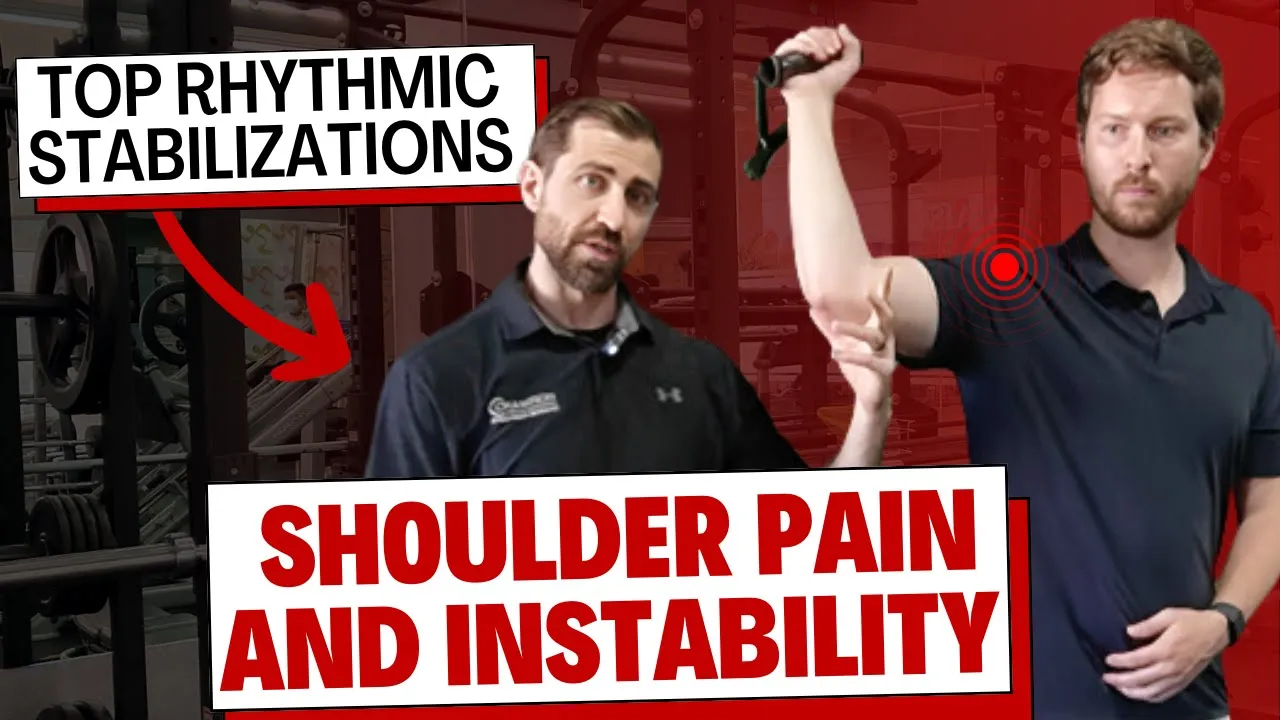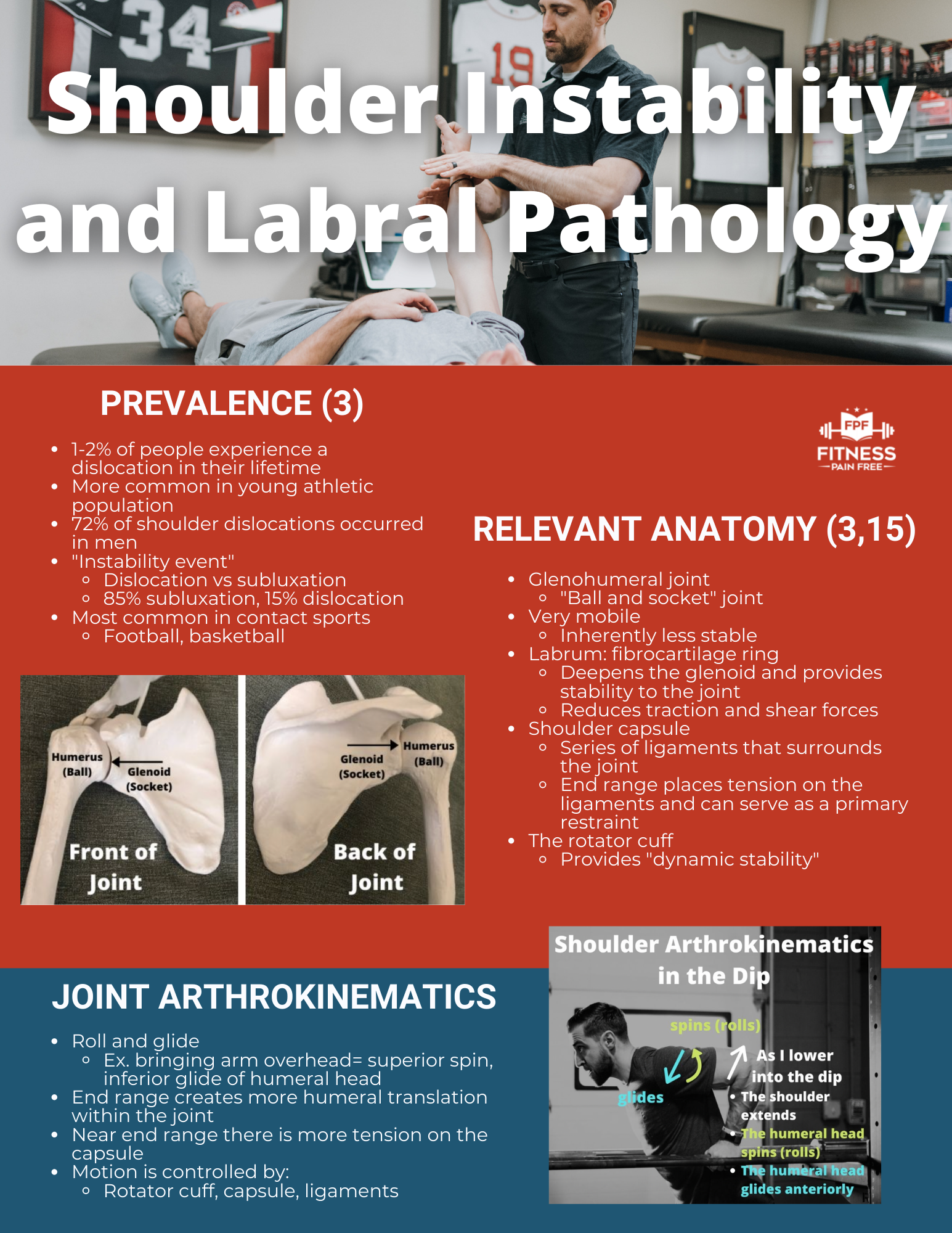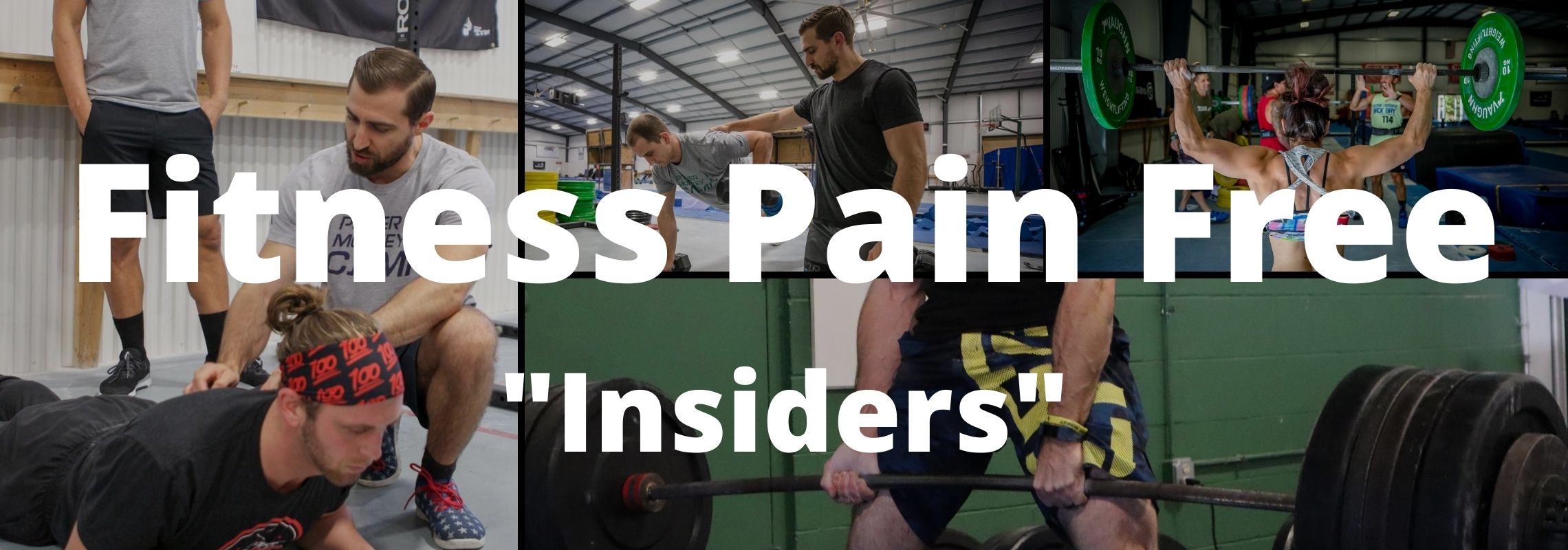
My Favorite Rhythmic Stabilizations For Shoulder Pain and Instability [Physical Therapist Guide]
To go along with today's episode I have a nice infographic to share...
Sign up to receive FREE: Shoulder Instability and Labral Pathology - The Evidence Based Cheat Sheet
Click HERE to Download FREE
Grab the rest of the Mini Course and Sign up for the Certification Pre-sale list:
- FPF Mini Course - 7 Reasons Why Injuries Happen in the Gym and What to do About it
- The Fitness Pain Free Certification
In today's video we go over My Favorite Rhythmic Stabilizations For Shoulder Pain and Instability [Physical Therapist Guide]:
Struggling to help patients with shoulder instability regain confidence in their movements? This video dives deep into rhythmic stabilization exercises, a powerful tool for improving shoulder stability and function! Why are rhythmic stabilization exercises great for shoulder instability?
- They target specific positions that cause apprehension in patients.
- They build strength and stability, allowing patients to tolerate these positions better.
- They improve proprioception (awareness of joint position) in the shoulder joint, especially helpful after injuries like dislocations.
The video will show you:
- Various ways to perform rhythmic stabilization exercises with your patients.
- How to progress these exercises to challenge patients as they improve.
- Specific exercises for different types of shoulder instability (anterior, posterior, inferior).
Plus, learn how to incorporate rhythmic stabilization exercises with common rehab exercises! Take your patients' shoulder rehab to the next level with rhythmic stabilization exercises!
Timeline:
- 0:00 - Intro
- 0:10 - Who Needs Rhythmic Stabilization?
- 0:46 - Restoring Proprioception
- 1:10 - How to Perform and Progress Rhythmic Stabilizations
- 4:05 - Adding Rhythmic Stabilizations to Rotator Cuff and Scapular Stability Exercises
- 4:40 - Improving Anterior Instability
- 6:40 - Improving Posterior Instability
- 8:42 - Improving Inferior Instability
- 9:50 - Conclusion
Don't let me move you!!!
- Dan Pope DPT,OCS,CSCS
Show Notes / Relevant Articles:
- FPF Mini Course - 7 Reasons Why Injuries Happen in the Gym and What to do About it
- Shoulder Instability Exercise Basics [5 Keys for Physical Therapists]
- Anterior Shoulder Instability Clinical Examination [Physical Therapist Guide to Diagnosis]
- What Physical Therapists Need to Know About SLAP Tears
- What Physical Therapists Need to Know about Shoulder Instability
- 6 Keys to Shoulder Instability Physical Therapy
Want to support me and decide topics for future episodes? Click HERE to sign up for FPF "Insiders" for just a dollar. You'll gain access to 100+ webinars, e-books and complete guides. Plus, you'll get private access to the "Insiders" Facebook group where you can have all of your questions answered by me.
Looking for other ways to support me that are 100% free?
- Like, comment and share on youtube, facebook and instagram
- Leave a 5-star review on apple podcasts
Thank you!
Dan Pope DPT, OCS, CSCS
References:
- Wilk KE, Macrina LC, Reinold MM. Non-operative rehabilitation for traumatic and atraumatic glenohumeral instability. N Am J Sports Phys Ther. 2006 Feb;1(1):16-31. PMID: 21522197; PMCID: PMC2953282.

